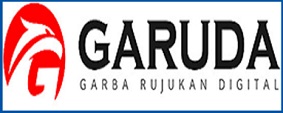Geometry fun circuit play for children's geometric shapes recognition
DOI:
https://doi.org/10.26555/jecce.v4i2.5369Keywords:
geometry fun circuit, play, shapes recognitionAbstract
Geometric shape recognition ability is among preschool children's cognitive development indicators. It is necessary to design an innovative method to stimulate their cognitive development through play, such as geometry fun circuit play. However, this play needs further security on its effects on children's geometric shape recognition ability. The present study attempted to test the effect of geometry fun play on preschool children's geometric shape recognition. A quasi-experimental study with a non-equivalent control group design was applied involving thirty participants. The experimental and control groups in this study showed a significance value of <0.001, meaning that the geometry fun circuit play significantly affects preschool children's geometric shapes recognition. Geometry fun circuit play is recommended as one of the alternatives parents, and teachers can use for stimulating preschool children's cognitive development.
References
Darmawan, A. C. (2019). Pedoman Praktis Tumbuh Kembang Anak (Usia 0-72 Bulan) (1 April 20). IPB Press.
Fikriyah, M. D. (2018). Pengaruh Model Pembelajaran Cooperative Integrated Reading and Composition (CIRC) terhadap Kemampuan Membandingkan Isi Dua Teks yang Dibaca dengan Membaca Sekilas Siswa Kelas V SDN 1 Tanggaran Tahun Ajaran 2016/2017. Simki-Pedagogia, 2(1), 1–9.
Hasnawati. (2019). Urgensi Pendidikan Islam pada Anak Usia Dini dalam Membentuk Kepribadian Islami. Jurnal Andi Djemma : Jurnal Pendidikan, 03(01), 19–29. https://unanda.ac.id/ojs/index.php/andidjemma/article/view/223%0A
Khosiah, S. (2018). Pengaruh Farming Gardening Project Terhadap Kemampuan Mengenai Konsep Bilangan pada Anak Usia Taman Kanak-Kanak di Ar-Rahman Islamic School Cinere Depok. Fikrah: Journal of Islamic Education, 2(1), 68–84.
Mahardika, E. K., Darwiyati, D., Waluyo, S., & Hafa, M. F. (2022). Evaluasi Metode Pembelajaran Melalui Permainan di Taman Kanak Kanak Kota Blitar. Jurnal Obsesi : Jurnal Pendidikan Anak Usia Dini, 6(4), 2745–2752. https://doi.org/10.31004/obsesi.v6i4.1083
Nurjani, Y. Y., & Jubaedah, E. (2020). Pengenalan Bentuk Geometri Melalui Metode Bermain Permainan Tradisional Sondah Bagi Anak Usia Dini. Journal of SPORT : Sport, Physical Education, Organization, Recreation, and Training, 4(1), 22–29. https://doi.org/10.37058/sport.v4i1.1557
Paramitha, M. V. A., & Supiati, V. (2020). Efektifitas Permainan Sirkuit dalam Menstimulus Kemampuan Motorik Halus Anak Usia Dini. Jurnal Golden Age, 04(02), 343–350. https://doi.org/10.29408/jga.v4i02.2615
Rahmadani, B., Novianti, R., & Puspitasari, E. (2017). Pengaruh Permainan Twister Modifikasi terhadap Kemampuan Mengenal Bentuk Geometri Annak Usia 4-5 Tahun di Tk Shandy Putra Telkom Kota Pekanbaru. Jurnal Online Mahasiswa Fakultas Keguruan Dan Ilmu Pendidikan Universitas Riau, 4(2), 1–15.
Risdianti, H. (2019). Pengaruh Pemanfaatan Permainan Sirkuit Geometry Fun Terhadap Kemampuan Fisik Motorik Kasar Kelompok B di TK An-Nur Malang. Jurnal PAUD: Kajian Teori Dan Praktik, 1(2), 95–104.
Sari, R. (2017). Peningkatan Kemampuan Menganal Bentuk Geometri Melalui Model Pembelajaran Kooperatif Make A Match pada Anak Usia 4-5 Tahun. Prosiding Seminar Nasional Pg Paud Untirta, 205–210.
Sihite, J., & Dimyati, D. (2022). Pengaruh Permainan Sirkuit Pos Geometri Terhadap Motorik Kasar Anak Usia 5-6 Tahun. Jurnal Obsesi : Jurnal Pendidikan Anak Usia Dini, 6(3), 2223–2233. https://doi.org/10.31004/obsesi.v6i3.1896
Sukadariyah, R. F., Fatimah, A., & Maryani, K. (2020). Pengaruh Permainan Tradisional Engklek terhadap Kemampuan Geometri Anak. Yaa Bunayya: Jurnal Pendidikan Anak Usia Dini, 4(1), 57–63.
Downloads
Published
How to Cite
Issue
Section
License
Copyright (c) 2022 Savira Savira

This work is licensed under a Creative Commons Attribution-ShareAlike 4.0 International License.
Authors who publish with this journal agree to the following terms:
- Authors retain copyright and grant the journal right of first publication with the work simultaneously licensed under a Creative Commons Attribution-ShareAlike 4.0 International License that allows others to share the work with an acknowledgement of the works authorship and initial publication in this journal.
- Authors are able to enter into separate, additional contractual arrangements for the non-exclusive distribution of the journals published version of the work (e.g., post it to an institutional repository or publish it in a book), with an acknowledgement of its initial publication in this journal.
- Authors are permitted and encouraged to post their work online (e.g., in institutional repositories or on their website) prior to and during the submission process, as it can lead to productive exchanges, as well as earlier and greater citation of published work (See The Effect of Open Access).











